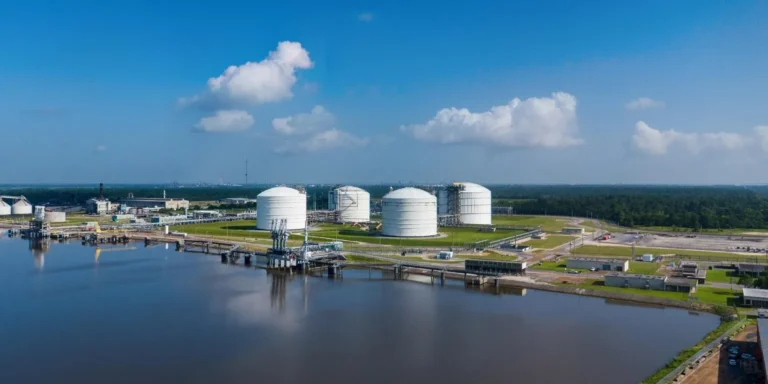
At the end of 2022, Chevron began piloting a new technology developed by Svante Inc. to capture carbon dioxide (CO2) at our Kern River asset in California’s San Joaquin Valley. Our confidence in this technology has led us to be a lead investor in a recent funding series for Svante.
what’s driving the news
We teamed up with Svante and Kiewit Energy Group Inc., a construction and engineering firm, to test the technology on an industrial scale. This pilot is part of an agreement (Cooperative Agreement No. DE-FE0031944) with the U.S. Department of Energy National Energy Technology Laboratory that helps us pursue technology that has the potential to lower the risk and the cost of carbon capture.
We expect our investment to help accelerate the manufacturing of this promising technology.
the technology
Capturing CO2 is nothing new, but Svante’s technique replaces large, conventional chemical solvent towers with a single piece of compact equipment. The technology is readily scalable and adaptable across industries, according to Claude Letourneau, Svante’s president and CEO.
why it matters
Chevron’s long-term enterprise-wide plan is to capture carbon, to store it safely and permanently deep underground or to reuse it, for instance in manufacturing other products such as concrete building materials. These practices, known as carbon capture, utilization, and storage (CCUS), form a critical tool in meeting the greenhouse gas emissions reductions of the Paris Agreement.
“We know that CCUS will be a critical enabler in delivering on society’s ambitions towards global net zero, and several technologies will be needed to achieve that ambition.”
chris powers
vice president, carbon capture, utilization, and storage
Svante’s technology is an important addition to the suite of carbon capture tools available to industries.
“Several carbon capture technologies exist today, and they all have important roles to play in addressing the diverse requirements of hard-to-avoid emissions,” Letourneau said. “Svante’s focus is to commercialize its solid sorbent-based filters for carbon capture and removal at scale. We are diligently working to lead the industry and pave the way for a more viable carbon capture and removal market.”
working together
Collaboration was key on this project. Each organization had something to offer:
- Chevron has provided carbon capture expertise and project management as well as the facility to test the technology in a real-world industrial setting.
- The U.S. Department of Energy (DOE) awarded a cooperative agreement to help fund the pilot. The National Energy Technology Laboratory is helping run the trial and administer the award.
- Svante supplied the technology.
- Kiewit provided detailed design services, procurement, construction and facility start-up services to the project.
- Offshore Technology Services is operating the carbon capture plant.
“Partnership is a key focus area for Chevron, and this is an example of bringing together diverse companies that have different skill sets to make projects successful.”
chris powers
vice president, carbon capture, utilization, and storage
scale up, reduce costs
Carbon capture is an area where efficient technology could reduce costs and enable more widespread adoption.
Through pilot programs such as this one, Chevron can help bring early insights from promising technologies to help speed up their commercialization and deployment to industries such as cement, steel and refining, among others.
Helping fund the commercialization of Svante’s technology reinforces our commitment to support projects and technologies that help reduce CO2 emissions.
Source link: https://www.chevron.com/






